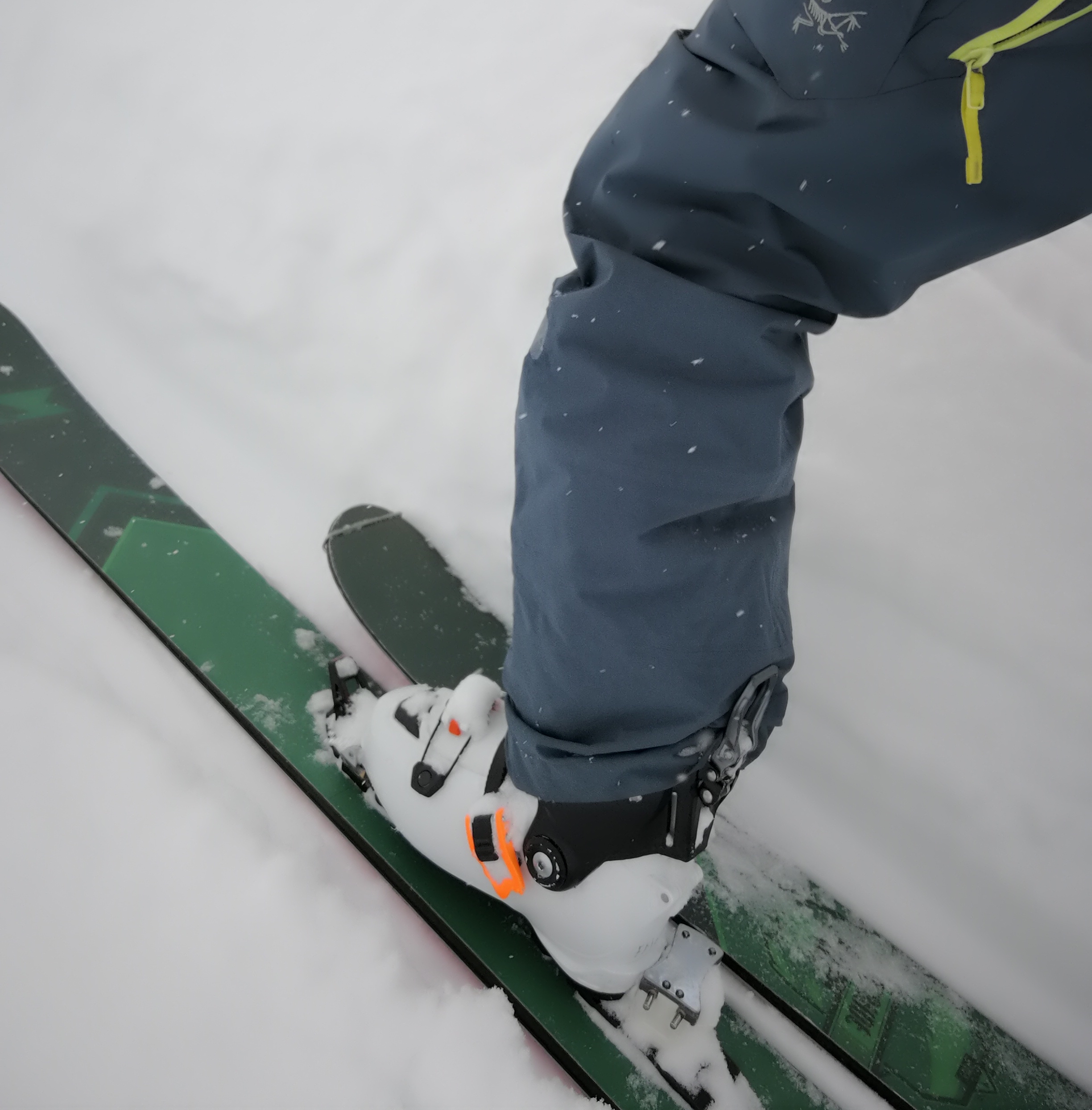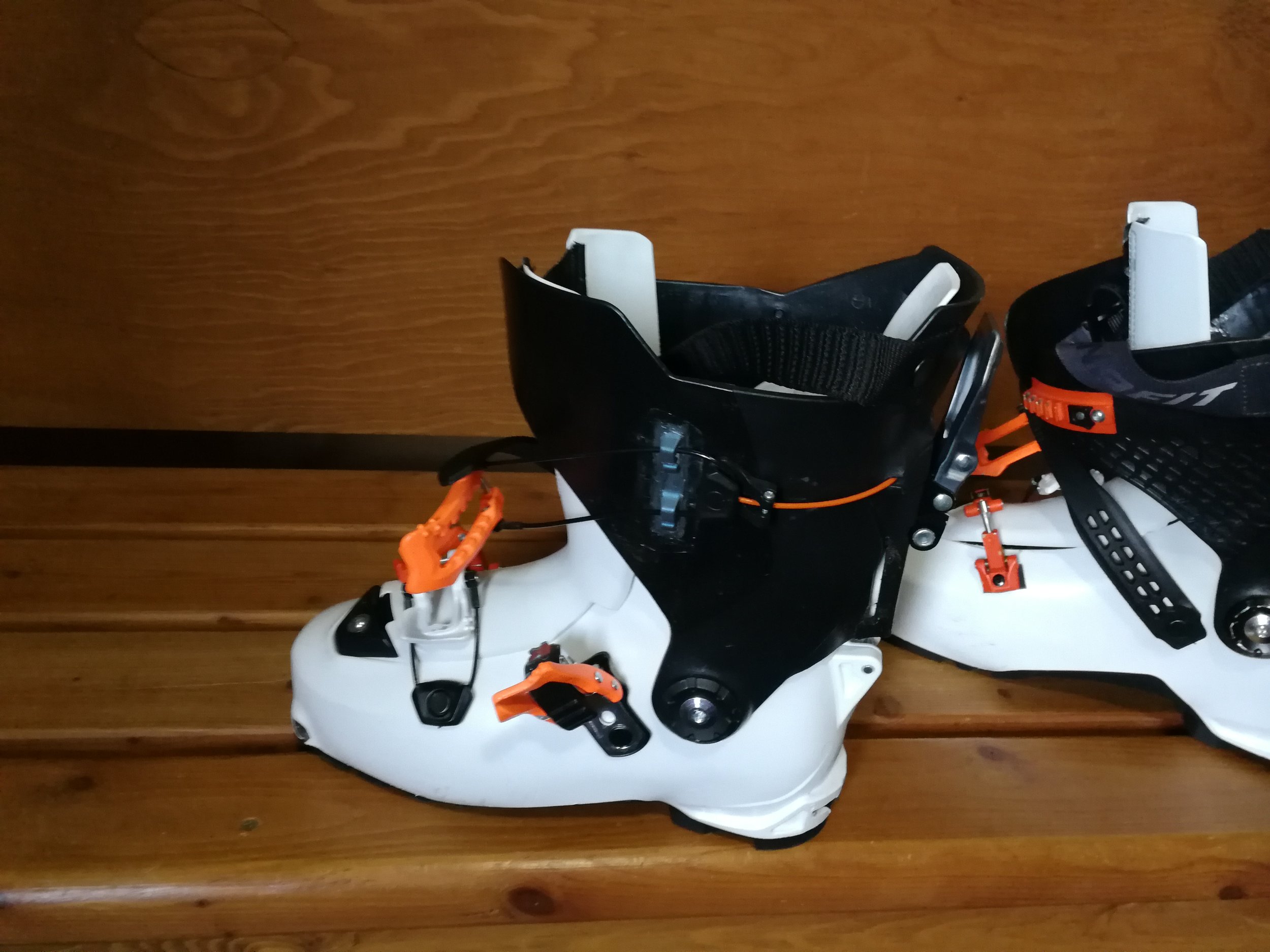Dynafit Ridge: Early Adopter Review
I used the Dynafit Ridge Pro boots all last season and put something like 70 days on them. Though biased in many ways, I wouldn't take the time to write about them if I didn't honestly think they were the best boots I've ever skied in. What makes them so great, and what can be improved?
The tester - I almost exclusively backcountry ski, but encounter a variety of conditions. I'm not heavy (160lb), but every now and then, I try to ski aggressively, and I want my gear to perform on the way down first and foremost.
The Weight: 1250g
The drop in weight was the upgrade I was most excited about. Coming from the Dynafit Radical and the Hoji Free 130 before that, you're saving 150g per foot, but it feels like more when you pick them up. Unfortunately, I don't notice the weight difference when I'm in the snow. Maybe I'm not as fine-tuned a machine as I thought, or perhaps gear just gets lighter as I get older and weaker, and the two factors cancel each other out?
Range Of Motion:
Forget the degrees (they claim 70 deg) because most good touring boots now have a range of motion that exceeds what our ankles typically use. What matters now is the resistance or friction in that range, especially in the range of your natural stride. That's where the minimal, light skimo race boots nail it, and beefy freeski boots suffer. These Dynafit Ridge are clearly superior to the Radical or Hoji. It's noticeable as soon as you put them on, and when you hit an incline, you realize how much more comfortable you are walking uphill than anyone else with beefier boots.
This is where you gain efficiency and performance more than the decreased weight. Either way, I do notice it's less fatiguing to walk in these all day compared to the Radical, and I'm in no hurry to take these boots off after a day. They are less clunky than any other boot I've skied in, so they are just more comfortable even to apres in.
Skiing:
These boots are stiffer than expected (they claim a 120 flex). They certainly feel stiffer than the Radical Pro, which claims a 125 flex. They aren't as stiff as the old Hoji Free 130, but those were too much for me, anyhow. If you've tried carbon or skimo race-inspired boots, you'll know that they can be stiff in a different way. They usually don't have the progressive flex that alpine skiers are used to, and they can feel rigid and less forgiving. The Ridge has a hint of that. They do not flex in as progressive or cushioned a manner as the Radical or alpine boots. In powder, I don't notice it, and when I'm driving through a turn or skiing aggressively, I appreciate the responsive rigidity. It's when I'm skiing less enthusiastically in variable snow that I find myself wishing for a softer boot that would dampen the chop or bumps a bit more.
Crampons:
Yes. Unlike the old Hoji Tour boots and some skimo boots, these puppies accept a toe bail, and you can use step-in crampons.
The Real Improvement:
This boot starts with ski performance in mind, and the "floating tongue" is the real innovation. One of the main tricks to getting ski performance out of a boot is eliminating heel lift. In touring boots, it's challenging to find a way to lock the heel down while maintaining range of motion in walk mode. Instead of just improving the over-ankle strap (like Scarpa or Dynafit have used in the past) to crush the foot down, the Ridge uses a cable system to slide an internal tongue back toward the heel. You can watch the tongue float away from your toe as you tighten the dial. This means that many different foot shapes can achieve a tight and comfortable heel lock as the tongue can slide back or down, or any combo of the two, as you tighten it.
The floating tongue is a bit hard to explain and I think that's why it isn't getting the press this one innovation deserves. Other boots use Boa's to close a boot in the same old way. This boot uses a cable (not Boa by name) to fit the boot around your foot in a better manner.
Fit:
Nothing else matters, right? With ski boots, if they don't fit, they aren't for you. Many skiers tried to squeeze into the Hoji Free a few years ago (last width 102mm), and the foot pain was widespread. Way more people had happy feet in the Radical (last 103.5mm). The Ridge is said to be 101mm, but that number doesn't capture the way it feels to me. The Hoji Free had an arch crushing (or performance boosting?) lower that held you tight but also gave many people sore ankles or painful pressure points on the top of the foot. The Radical has a more relaxed fit that works for most skiers. The Ridge boots feel tighter and narrower than the Radical but without the pressure points on the top of the foot that the Free had.
From what I've seen so far from a handful of people trying them on, I imagine the Ridge will fit most people who don't have a particularly wide foot.
One possible fit issue may be the thin liner. This is how touring boots are shedding weight these days - make the liner thinner, and you can shrink the boot to shave grams. That's fine, but it makes the fit less forgiving; minor imperfections aren't smoothed out by millimetres of squishy liner foam.
In walk mode, I was getting ankle pain on any sidehill as the foam liner was not enough to cushion my bony ankles. And it does seem like Dynafit has shrunk the shell a bit to pair with the thinner liner. Normally I wear a 25, but with the Ridge I've been happy in a 26 paired with my usual Intuition liners, which are thicker than the stock Ridge liner.
New Hoji Lock:
This one is a big deal for me, though many people won't notice. Hoji spent countless hours refining the inner wedge that locks the upper cuff to the lower boot in ski mode and how it slides up in walk mode. The improvement means a more streamlined fit between the shell and liner and less drag when switching to ski mode. The cuff has to tighten significantly with skinny calves when going to ski mode. This took a lot of effort in the Radical or Hoji Free (like all my body weight pushing down on the lever). The new Hoji Lock on the Ridge is easy and smooth, saving a guy like me energy at every changeover.
Complaints?
The one issue I have is also related to skinny calves. The Hoji Lock walk mechanism has remarkable throw. By that, I mean the difference between tight and closed for skiing vs. open and loose for walking. But with skinny calves, the cuff must be pulled around so much that it doesn't fully open in walk mode. If my day starts with a long approach, I'll start with the upper buckle loose and the power strap barely done up. I tighten it all to ski, and from then on, just release the Hoji Lock and flip the upper buckle to walk mode. Then, I deal with the minor increase in friction while walking for the rest of the day. It is minor, and I get that they have to make the boots for more average legs.
On that same topic, the upper buckle has a lot of work to do to get from loose walk mode to tight around my chicken legs. And it kinda comes up short. The leverage needed to get them tight enough is hard to accomplish as the buckle is designed with a slider in the middle for the ratchet.
Lastly, the power strap on this boot is crucial. With just one upper buckle, the strap must hold your leg tight. Dynafit has put on a very average Velcro strap that works but is hard to get tight enough. I'll change it out for a camming-style power strap (like a Booster Strap)as soon as possible.
Conclusion:
Best boot ever.
Of course, I say that every few years, and not everyone wants what I want out of a boot (the most effortless walking paired with excellent performance in powder, rarely at the ski hill). I worry about the cable system breaking some day, but so far, there have been no issues or noticeable wear, and I'm told Dynafit is ready to replace the cables if people break them.
Fit matters most with ski boots, but if the Ridge fits you, I definitely recommend it.












